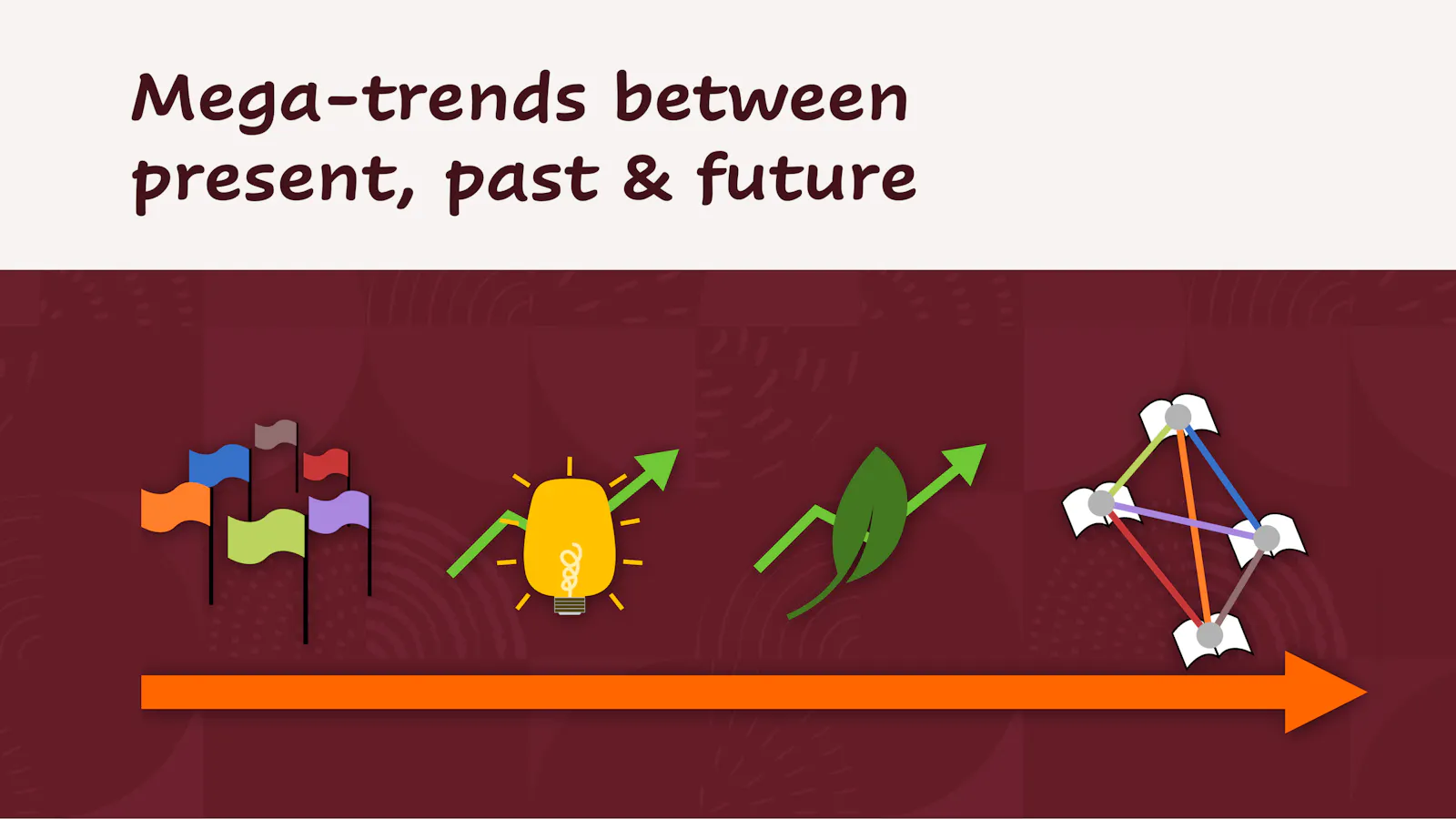Mega-trends between present, past & future
August 2023

Our summer reading continues with more reflections on how to think about the future. Think about it as a realm of endless possibilities, which feed our imagination. While we cannot predict the path it will take, we can discern certain patterns and trajectories that provide valuable insights into what lies ahead. Mega-trends serve as guideposts as they help to contextualise changes happening around us and navigate uncertainty. They are also anchoring points for discussing desirable futures. By understanding the big picture painted by mega-trends, we can spot opportunities that have the potential to shape our world.
Earlier this year, SITRA published a report on mega-trends (Opens in a new window) which exactly does this. It helps to get grip on some mega-trends and to discuss them in terms of opportunities rather than unescapable external forces.
Understanding Mega-Trends: Peering into Tomorrow's Landscape
Mega-trends are broad, overarching developments that span across industries, cultures, and geographies. They are powerful currents of change that emerge from the convergence of various factors, such as technological advancements, societal shifts, economic fluctuations, and environmental concerns. Observing these mega-trends allows us to anticipate the direction in which our society and economy are moving, and recognise opportunities.
In recent years, most mega-trend reports focused on issues such as technological advancements & innovation, demographic shifts incl. ageing and migration, climate change, biodiversity, sustainability and environmental challenges, changing consumer behaviour, global connectivity and trade.
To read this post you'll need to become a member. Members help us fund our work to ensure we can stick around long-term.
See our plans (Opens in a new window)
Already a member? Log in (Opens in a new window)


